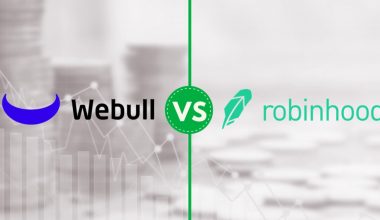The importance of a property’s value applies to both buyers and sellers and is reciprocal. If you’re trying to get into the buy-to-let market, having your home valued by a reputable real estate company will help you figure out what the market-related rent would be and, consequently, what yield you can anticipate. However, this post helps us to understand the various methods and basis of property valuation, even in the commercial aspect.
Property Valuation
A property’s value, from a strategic point of view, is the present value of future benefits accruing from its ownership. The advantages of real estate are typically experienced over a lengthy period of time, unlike many consumer goods that are quickly consumed. The practice of assigning a specific economic value to a piece of real estate is called property valuation.
In general, property valuation aims to establish fair market value, which is the cost at which a competent seller would be ready to sell her property and a competent buyer would be interested in buying it. In other words, it is based on the premise that both sides are fully informed and that neither is under any pressure to buy or sell. The cost of sales is not necessarily the same as fair market value. For instance, when the seller is in a crisis and needs to sell the property immediately, a short sale of real estate might not get fair market value.
The four components of value economic, social, governmental restrictions or regulations, environmental factors, and trends in each must all be taken into account when estimating the worth of a property.
- Demand: The urge or requirement for ownership accompanied by the financial resources to satiate the urge
- Utility: is the capacity to fulfill the wants and demands of potential owners.
- Scarcity: Limited availability of rival properties
- Transferability: This is the ease with which ownership rights can be transferred.
Property Valuation Regulations
Let’s look at some ideas that are frequently applied to estimate property values.
#1. The Principle of Conformity
According to this, real estate usually has a higher value than real estate that does not match the usage and style of the nearby properties.
#2. The Principle of Change
It acknowledges that a variety of factors influence and alter the housing market and property values. One environmental change that would affect property prices is pollution that seeps into a residential area.
#3. The Substitution Principle
It simply refers to a property’s capacity to function as a suitable replacement for another.
#4. The Supply and Demand Principle
It states that prices will increase if demand outpaces supply, but prices will decrease if supply surpasses demand for real estate.
#5. The Highest and Best Use Principle
It claims that when a piece of property is useful in a way that generates the most economic value, it will fetch the greatest price.
#6. The Progression Principle
Requires that nearby properties with higher values can raise the value of nearby properties with lower values. In other words, just because it’s close to the nicest homes in the area, the worst house on the block is worth more.
#7. The Regression Principle
It is the antithesis of the advancement concept. When low-value properties are located close to a high-value property, the price of the higher-value property is always dragged down.
#8. The Contribution Principle
This entails figuring out how each element of the property affects its overall value. Take a residential lot with a house and pool as an illustration. The land, the home, and the pool can all be as an example of individual elements that contribute to the overall value of the real estate.
What Happens During the Valuation Process?
The appraiser acts much like a potential buyer while performing a property valuation. Based on elements including terrain, location, and plot size, as well as zoning and the property’s potential for future development, they will evaluate the land on which the property is situated.
Because there is always the possibility of rezoning and future development, the value of the real estate is not only defined by what is on the site. In order to offer you and them a general idea of what your property will be valued at, your estate agent or evaluator should also give you information on recent sales and current home values in your neighborhood.
Similar to how one would generally do while viewing a house for sale, the valuer will also inspect the property from the inside out. The appraiser will measure the building’s size inside and make notes about the number and types of rooms, the fittings and fixtures, and the property’s age.
As the appraiser must evaluate every component of your property, a property valuation appointment may take some time. Setting aside adequate time for the appointment and asking any questions you may have regarding the assessment process is important to ensure a thorough and proper value.
What to Prepare Before a Valuation?
You can do a few things to get ready for the meeting with your estate agent or appraiser. These will enable you to get the most out of your meeting and make getting the most precise valuation of the property as simple and hassle-free as possible.
The first step is to give the area a quick once-over. Since it is doubtful that the valuer will be taking many images prior to the sale, you don’t need to immediately steam the carpets or clean the gutters. However, a little decluttering and organization can help to maximize the sense of space and bring attention to the property’s best qualities.
Any pertinent legal documentation you may have for the property should also be ready. It will assist you to acquire an accurate valuation. Only if you provide the valuer with documents such as building drawings, lease or rate information, and maintenance charges.
As you get ready for the visit, don’t forget to ask questions and perhaps even jot down a few. The more you understand the process, the better equipped you will be to make future judgments and cultivate positive working relationships with estate agents and appraisers.
How Can I Raise My Property’s Value?
There are many ways to increase the value of your property, and not all of them entail major construction and the requirement of obtaining planning approval.
Because first impressions are so important, your home’s potential worth can be greatly increased by its curb appeal and landscape. Whether it’s only a fresh coat of paint to give your house a lively and opulent appearance from the street or building a deck in your garden to make space for entertaining.
Building additions like a conservatory for more living space or extending your kitchen with a side return can significantly increase the value of the house if you are willing and able to do so.
However, one need not always build in order to increase room. Rather you need to upgrade some existing facilities to increase value without spending a fortune on labor and supplies.
Methods of Property Valuation
During the valuation of a property, there are five basic methods you can use: comparison, profits, residual, contractors, and investment. When determining the market or rental value of a property, a property appraiser may choose to employ one or more of these strategies. The comparison methods of property valuation are the most common and recommended approach. Since they are directly related to current market activities.
#1. Profit Method
This is one of the best methods of property valuation you can use as an evaluator. When attempting to evaluate a commercial location, such as a restaurant, shopping center, or hotel, this strategy is the preferred choice. It is determined by taking a three-year running average of operating income into the arrangement. These numbers will be taken from the income statement or loss and profit statement of the company.
It’s vital to keep in mind that the variables employed in a profit technique are derived from the property itself. Rather than from a secondary market. As a result, the estimates provided by the valuator will be investment value rather than the market value of the property. Also, it is not possible to make modifications during valuation.
#2. Cost Method
You can take into account an estimate of a property’s replacement value in this procedure to make it work properly. Examining the price of each property’s component does this. In other words, you can add the free market value of the land to the cost of the property’s building reconstruction. This is to determine the value of a piece of property. There can be a reduction of the prior addition by the amount that represents the depreciation this building has experienced over the course of its existence.
However, the majority of appraisers do not believe this method is one of the best methods of property valuation to be sufficiently precise and dependable for estimating a property’s current market value.
#3. Investment Method
The commercial property that has been determined to be capable of producing future cash flows through being leased out or other ways is most frequently valued using this method. It is now in records that this method of valuation has also been useful to value a few residential buildings.
The yield of future cash flows from a property is used to produce the outcomes of an investment valuation. A lower yield means a smaller return on investment, whereas a higher yield means a bigger return on investment. It will be simpler to assess a property’s value if the present estimated rental value (ERV), the market-determined equivalent yield, and the property’s passing income are made available.
Because the market determines the key variables useful in both procedures, the investment method, and the comparative method are fundamentally two property valuation methods that are quite similar.
#4. Residual Method
With the use of a very straightforward computation, this method of valuation enables a valuer to ascertain the true worth of a land or property purchase. It is primarily useful when a real estate developer or aspirant is attempting to decide. Deciding whether a property is suitable for development, redevelopment, or whether it would be better used as bare land.
A reasonable estimation of the actual value of a piece of land or property will be provided once the valuator has successfully applied the residual method. A property developer will find this appraisal to be helpful in determining the optimum use for the particular property. Additionally, it will assist the property developer in selecting budgetary constraints for spending on improving the property to maximize profit. That is, a property owner will be able to choose how much or how little to invest in developing a property, thereby utilizing the residual approach in order to maximize their return.
When determining a property’s value using the Residual approach, factors including gross development value, property developers’ profit, and building costs and fees are crucial.
#5. Comparison Method
It’s also known as the Inferred Analysis of Property Value or the Comparable approach. A property’s worth is estimated using the values of nearby properties in the comparative technique of property valuation. That is, a market value estimate for the subject property can be obtained by looking at and comparing the prices of other properties in the same area and with comparable building specifications. This approach to assessment is frequently useful when attempting to determine the worth of a residential property.
In order for this procedure to produce an appropriate assessment, the evaluator must collect pertinent information. From nearby properties that share the same characteristics as the subject property.
How to Pick the Most Effective Stock Valuation Method
The variety of stock valuation methods that are accessible to investors might easily overwhelm someone who is choosing one to evaluate a stock for the first time. While some valuation techniques are rather simple, others are more intricate and difficult.
Make sure the valuation method you choose is acceptable for the company you are assessing. And if it is more than one, utilize both to provide a more accurate assessment.
There are Two Types of Property Valuation Methods
Absolute valuation and relative valuation are the two major categories into which property valuation techniques normally fall.
#1. Absolute Valuation
Absolute valuation models look only at the fundamentals in an effort to determine the intrinsic or “real” worth of an investment. Looking at fundamentals basically means ignoring all other companies and concentrating just on the three things. The dividends, cash flow, and growth rate of one particular company. Examples include the dividend discount model, discounted cash flow model, residual income model, and asset-based model. And they are examples of property valuation methods that fit into this category.
#2. Relative Valuation
Contrarily, relative value models function by contrasting the in-question company with other comparable enterprises. In these techniques, multiples and ratios, such as the price-to-earnings (P/E) ratio, are calculated and compared to multiples of companies that are similar to the target company. For instance, the original company can be deemed undervalued if its P/E is lower than the P/E of a comparable company. Many investors and analysts start their investigation with the relative valuation model. This is because it is typically much simpler and quicker to calculate than the absolute valuation model.
Let’s examine some of the more well-liked property valuation methods available to investors and determine when to apply each model.
#1. Dividend Discount Model (DDM)
One of the most fundamental methods for absolute property valuation is the dividend discount model (DDM). The dividend discount model determines a company’s “true” worth based on the dividends it distributes to its shareholders. Dividends indicate the actual cash flows going to the shareholders. So, pricing the present value of these cash flows should provide you with a value for how much the shares should be worth. This is the reason for using dividends to value a firm.
Finding out if the company pays dividends is the first step. Since it is not sufficient for the corporation to just pay a dividend, the second step is to ascertain whether the payout is steady and predictable.
#2. Discounted Cash Flow (DCF) Models
What happens if the business doesn’t distribute dividends or if they do so infrequently? In this instance, proceed to see if the business satisfies the requirements for using the discounted cash flow (DCF) model. The DCF model values a company’s business by using its discounted future cash flows rather than dividends. The main benefit of this strategy is that it can be useful. Only to a wide range of businesses that don’t pay dividends, as well as businesses that do.
The Two-Stage DCF model is the most commonly useful variation of the DCF model, while there are other versions as well. This variation forecasts the free cash. It usually, flows typically over a period of five to ten years. After which there will be a calculation of a terminal value to account for all future cash flows. The organization must first have positive and stable free cash flows in order to use this approach.
The target firm should typically have consistent, predictable free cash flows in order to employ the DCF model most successfully. The mature businesses that have passed the growth stages are the ones with the best cash flows for the DCF model.
#3. Modeling Comparables
The final model is kind of a catch-all model. It is a type that you can use if none of the other models can be useful to value the company or if you don’t want to spend time crunching the figures. Unlike the first two valuation models, this one does not try to determine the stock’s intrinsic value. Instead, it assesses whether the company is comparatively undervalued or overvalued. By comparing the price multiples of the stock to a benchmark. The Law of One Price, which stipulates that two comparable assets should sell for comparable prices, serves as the foundation for this argument. One of the reasons this model is so useful is that it is intuitive.
The several multiples that can be useful, including price-to-earnings (P/E), price-to-book (P/B), price-to-sales (P/S), and price-to-cash flow (P/CF), etc. This explains why you can apply the comparables approach in almost all situations. The P/E ratio is the most widely valid of these ratios since it concentrates on the company’s earnings, which are one of the main factors that determine the value of an investment.
Commercial Property Valuation
The most important component in selecting whether or not to include commercial property in your investment portfolio is its correct valuation. To be successful in commercial real estate investing, you need to be able to effectively evaluate potential acquisition assets as well as your current holdings.
Why Is Commercial Property Valuation Important?
Property values are significant for a number of equally significant reasons. For buyers, a correct valuation guarantees that they do not overpay for an asset. And enables them to purchase a property at a fair market value. The same is true for sellers, who utilize valuations to set the price of their homes at a level that will maximize their profit. And this is from the sale and guarantees a speedy transaction.
Now, there are a number of techniques that investors, real estate experts, and finance experts use to evaluate properties these techniques are frequently situation-dependent based on the specifics of each property, such as its type, location, intended purpose, etc.
The Five Best Methods for Commercial Property Valuation
Investors can value a particular piece of commercial property using a variety of valuation methods. Let’s examine some of the most popular and efficient techniques.
#1. Cost Approach
The cost approach establishes the value of the subject property as the sum of the land price and the building’s construction expenses. This approach makes the assumption that a property’s price depends on how well it is useful. Since agriculture would be the most profitable and productive use of the land. The cost approach would be presumptively based on the valuation of the property for that use rather than residential or commercial.
#2. Using Income Capitalization
The income approach, often known as income capitalization, is a method of commercial property valuation that prioritizes the expectation of future benefits. The Income Approach evaluates value by considering both the prospective resale value of the property and the market rent that a property can fairly expect to earn. In essence, this approach turns revenue into value by making it the main determinant of worth.
#3. The Sales Comparison Method
The sales comparison approach, also known as the market approach, estimates the current worth of a similarly equipped property. It uses data from previously sold comparable properties and the asking prices of properties that are currently on the market. The multifamily and residential industries frequently employ this strategy.
The key advantages of this valuation approach stem from the fact that it makes use of actual market data. This provides investors with an overview of the local conditions as close to real-time as you can get in the commercial property industry.
#4. The Multiplier for Value Per Gross Rent
To calculate the value, similar to the income strategy, use a gross rent multiplier. There is a main distinction between these two approaches. This is because the income technique employs net operating income, whereas the gross rent multiplier approach bases its rate on gross rent.
To calculate the Gross Rent Multiplier Approach, it is as follows:
Property value = annual gross rents x gross rent multiplier.
#5. Value Per Door
Similar to the GRM, this strategy is quick and simple. If not always, it is as precise as some of the other approaches to valuation. This method establishes a benchmark in a commercial property for another comparable property by dividing the valuation of a comparable building by the number of doors.
This method fails to account for differences in apartment size and square footage, the quality of the housing, and other continuing costs related to maintaining a multifamily property. It is only relevant if you are utilizing comparably comparable comps.
Guidelines for Commercial Property Valuation
These are the valuation Approaches to commercial property valuation in real estate:
#1. Value
The simplest definition of a property’s value is the projected sum of all predicted net income streams. And they may result from owning the property. This sum represents the current value of prospective future financial advantages. Real estate assets typically generate value over a longer period of time. This includes years, decades, or longer, as opposed to instant consumables like pencils, twinkies, etc. which offer benefits right away.
#2. Utility
Utility in the context of commercial property valuation refers to the capacity of the asset to satisfy the demands and preferences of the subsequent owner. This may refer to the anticipated income or the utility of residing in a certain place, such as your principal dwelling.
#3. Demand
Similar to supply, demand describes the presence of ownership wants or aspirations as well as the corresponding financial capacity to carry out a purchase valuation of a piece of commercial property.
#4. Scarcity
A property type’s excess or scarcity in a particular area will have an impact on its pricing. Scarcity refers to the limitation of commercial real estate.
#5. Transferability
This phrase describes how simple it is to transfer ownership of a specific piece of property. For instance, it will be fundamentally more difficult to transfer a major industrial facility with several owners. Who needs to approve a sale or unpaid obligations than a property with a single owner, no liens, and no other investors or lenders involved?
Basis of Property Valuation
A concept or a set of presumptions established by the Royal Institution of Chartered Surveyors (RICS). This is a regulatory and professional body for valuers, that sets mandatory and best practice standards for the basic property valuation profession. It is referred to as the foundation of valuation. The RICS Valuation-Professional Principles 2014, often known as the “Red Book,” outlines these standards and practice statements.
The valuer must choose the proper basis (or bases) of property valuation. While for the task and adhere to any guidelines related to the basis (or bases) of property valuation choice.
The most appropriate basis for property valuation is frequently market value, market value subject to assumptions, or market value subject to unique assumptions. Market value is the estimated basis value of the development property valuation under the best possible development scenario. They are taking into consideration the current and future market and economic conditions as well as the planning requirements. You can include alternative site development options to this. To make an assessment of the ideal development, the valuer might require the help of other experts.
However, depending on the basis of property valuation intended to be useful. It may be necessary to make different development-related assumptions. For example, if there is a valuation of a property for lending purposes, it may be necessary to consider alternatives. To the current use as well as the actual proposed development project. In situations like this, where the basis of valuation property does not assume the best course of development, the assumptions made should be labeled as exceptional assumptions.
What is the Difference Between Basis of Valuation and Purpose of Valuation?
Sometimes referred to as “hope value,” the idea of a prospective worth arising from a change in circumstances
The valuation of development property must take into account a variety of prospective outcomes. As well as the challenges of determining the effects of any anticipated future change in conditions. However, this can increase the level of ambiguity surrounding the valuation. This added ambiguity raises specific reporting concerns. The basis of the property valuation report should explicitly state the valuation assumptions. A market expectation should be the basis for any property valuation assumption that is not in recognition as a unique premise.
These assumptions should be as transparent and consistent as feasible because they might significantly affect the basis of property valuation outcome.
Any specific assumptions or assumptions that apply only to the basis of the appraisal of development or property should be specified in the valuation report. These presumptions should be as transparent and consistent as feasible because they might significantly affect the outcome of the appraisal.
What Are the 5 Methods of Valuation?
When evaluating a property, there are five basic techniques used: comparison, profits, residual, contractors, and investment. When determining the market or rental value of a property, a property appraiser may choose to employ one or more of these strategies.
Which Valuation Method Is Best?
The DCF model value is the best for a company’s business by using its discounted future cash flows rather than dividends. The main benefit of this strategy is that it can be applied to a wide range of businesses that don’t pay dividends, as well as businesses that do.
What Are the Two Types of Valuation?
Absolute valuation and relative valuation are the two major categories into which valuation techniques normally fall.
Absolute valuation models look only at the fundamentals in an effort to determine the intrinsic or “real” worth of investment while relative value models function by contrasting the in-question company with other comparable enterprises.
Can You Get a Free Property Valuation?
There are several free internet house valuation tools available for determining the value of a home. However, free online home valuations are unlikely to be entirely correct and should be used only as a guide.
How Much Should a Property Valuation Cost?
A valuation performed by a chartered surveyor normally costs around £250, but this varies depending on the surveyor. Additionally, mortgage lenders do property values to determine whether the property is worth the asking price. Costs normally begin at £150 but can be significantly higher for larger, more desirable properties.
What Is the Most Popular Valuation Method?
The “comps” method provides an observable value for the firm based on the current value of comparable businesses. Comparables are the most popular method because the multiples are simple to calculate and always current.
What Reduces the Value of a Property?
Real estate market fluctuations might decrease the value of your home. Natural catastrophes and climate change might reduce the value of your home since they make it a riskier investment. Additionally, foreclosures in your community can decrease the value of your home.
Related Article
- FINANCIAL REPORTING: All You Need to Know With Examples (+ Quick Easy Tools)
- Property Valuation: How to Value Your Real Estate Investment & Properties.
- Stock Valuation: Overview, & Effective Valuation Methods
- Business Valuation: All you need to know [Detailed Guide]
- MORTGAGE VALUATION: How Long After Valuation To Mortgage Offer






